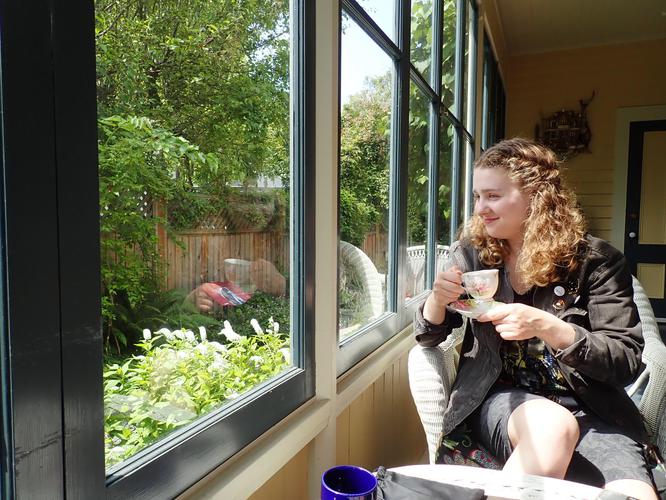
I'm Alex Kearney, I'm Science at the University of Alberta. I focus on Artificial Intelligence and Epistemology.

I'm Alex Kearney, I'm Science at the University of Alberta. I focus on Artificial Intelligence and Epistemology.

It's always interesting to see the origins of an artist you admire. Dylan and I meandered up to beacon hill to see Emily Carr house---the house Emily Carr and her sisters grew up in.
The museum was uniquely curated: sparse on details, but scattered with quotes that captured the family's experiences. It's fitting for a modernist.
The Carr's house was a large victorian home close to the sea-side, butting up against Beacon Hill Park. Many of the quoted passages throughout the home captured the. It's easy to see where Emily Carr's interest in capturing landscapes came from.
One of the most exciting aspects of the home isn't restoration-related. During the winter months, when the home is closed off to the public, Emily Carr house is hoping, to have a artist residency. I'm excited to see what comes of that.
Johannes and I had a some time before our flight left after the AAAI Fall Symposium Series to go check out some of the sights in D.C. We walked around the mall in the morning before the crowds descended and had a chance to take in the monuments with very few people around.
You often see the Vietnam War memorial in popular media, and for good reason: the Vietnam memorial is impactful.
I had never seen any depiction of the Korean War memorial: a lush statuary, rather than the typical neo-classical plaza.
The only way to experience the memorial is through a forest. To get to the inscription and the fountain you must emerge from cover into a clearing with a platoon of brass statues. The first statue seems to be waving you back.
The monument brings the environment to the statues.
There were a few wreathes laid down by the fountain, both with fresh flowers from Korean community organizations.